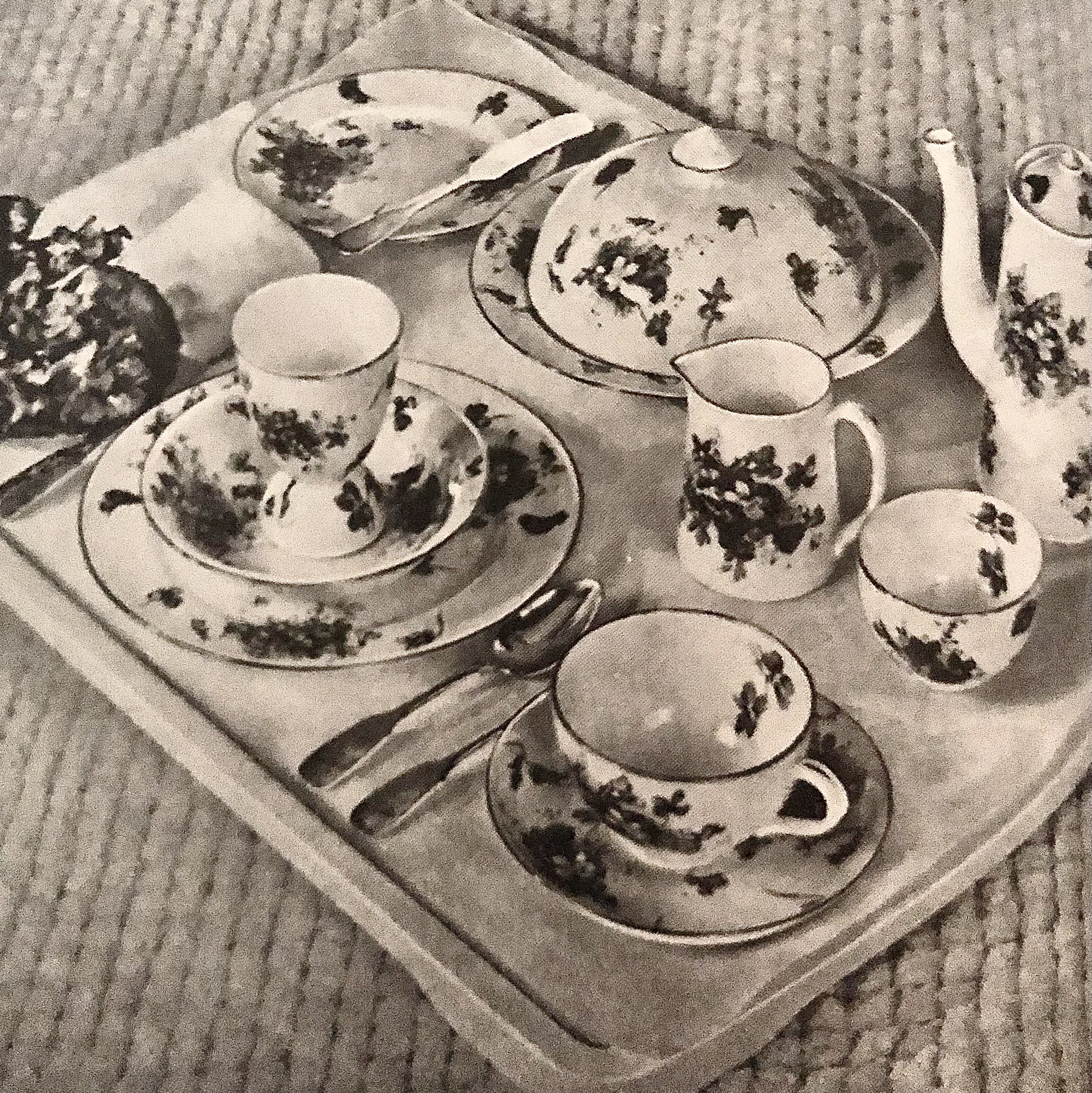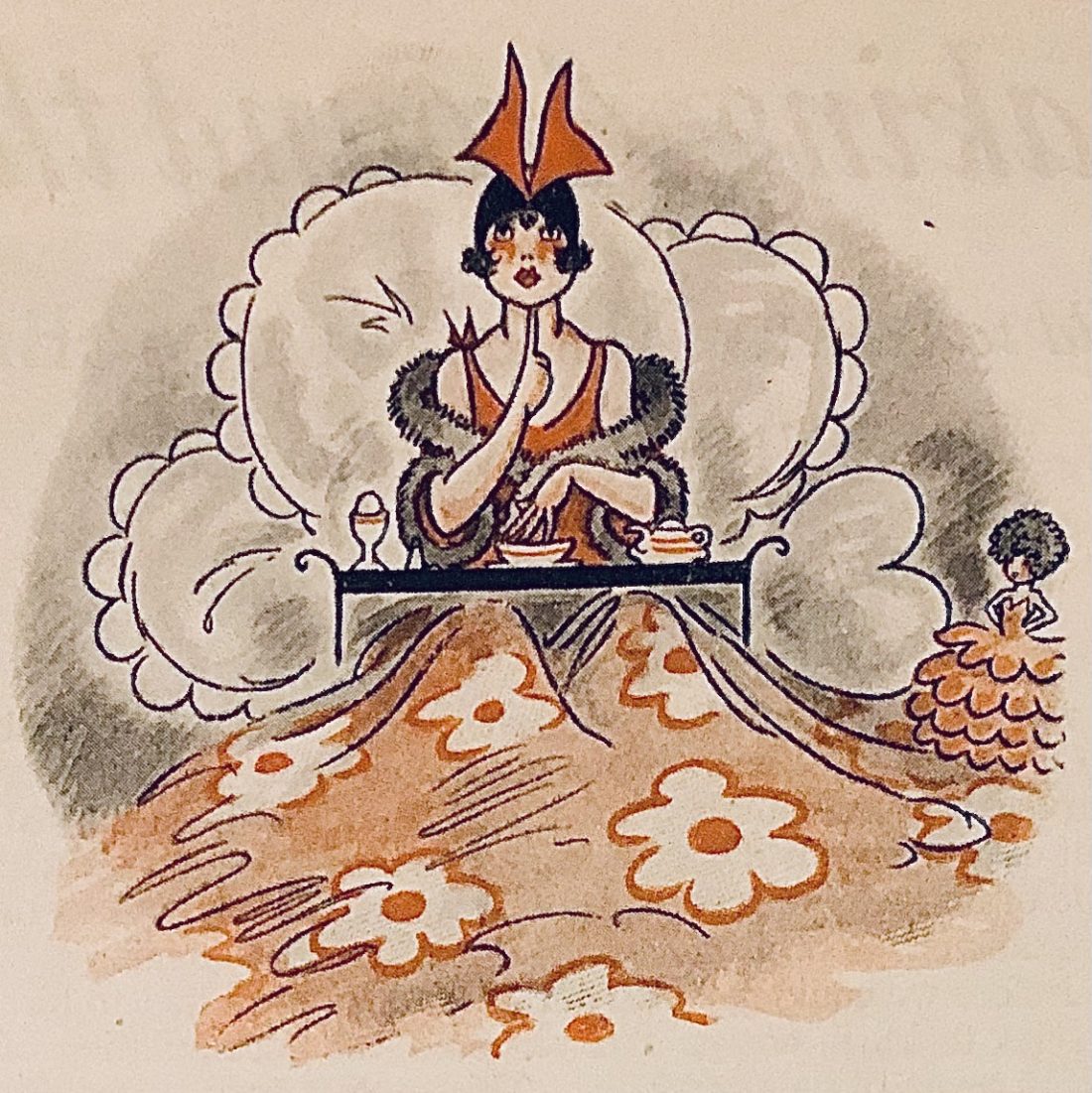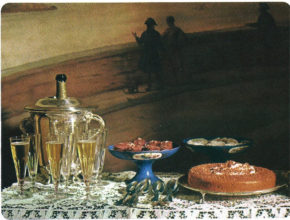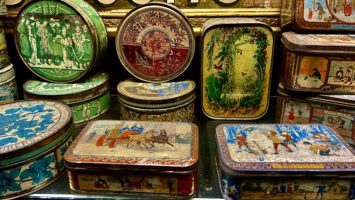I touched on this briefly when I discussed the breakfast tray and the tray cloth, but I love breakfast accoutrements and I can’t stop posting about this topic. Sorry, not sorry. Breakfast sets were china sets made specifically for both tray service and/or for your morning table service.
Breakfast sets made for trays generally contained a coffee pot, tea pot, hot water pot, cup, saucer, sugar, creamer, covered dish, egg cup, plate and bowl. Matching additional items were often available such as toast racks, chocolate pots, slop dishes, bread plates, butter dishes and jam pots. The finest sets were often purchased in single pieces so that it could be tailored to the owner’s specific tastes,
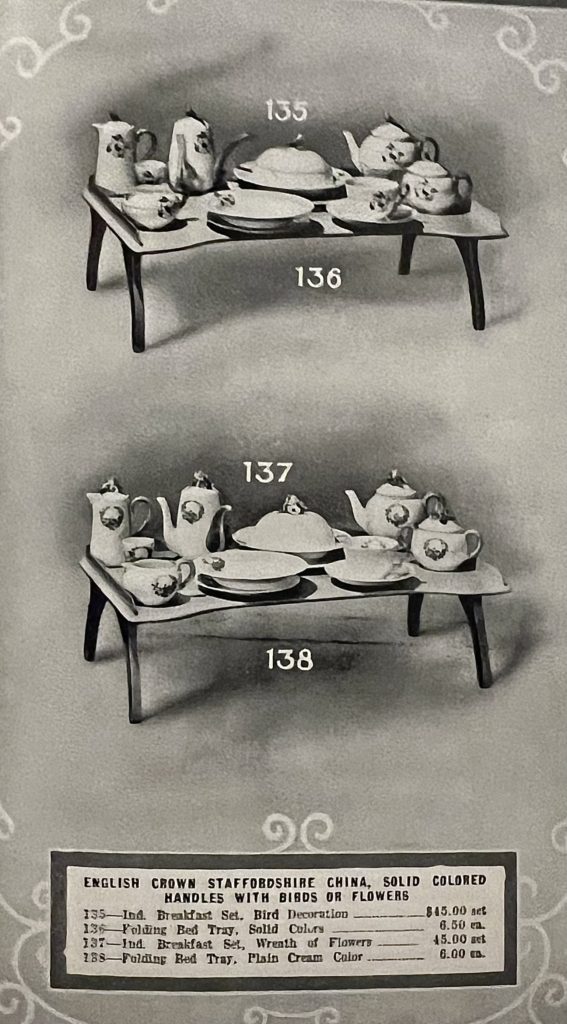
Obviously, these sets could be used at the table as well, though they were sized for a tray, so were so small they often didn’t translate perfectly to the table. Breakfast try sets were also fairly expensive, so having one for each member of the family was unlikely unless you were very wealthy. More often, a household would have one breakfast tray set reserved only for special occasions, overnight guests and family members on their sick bed.
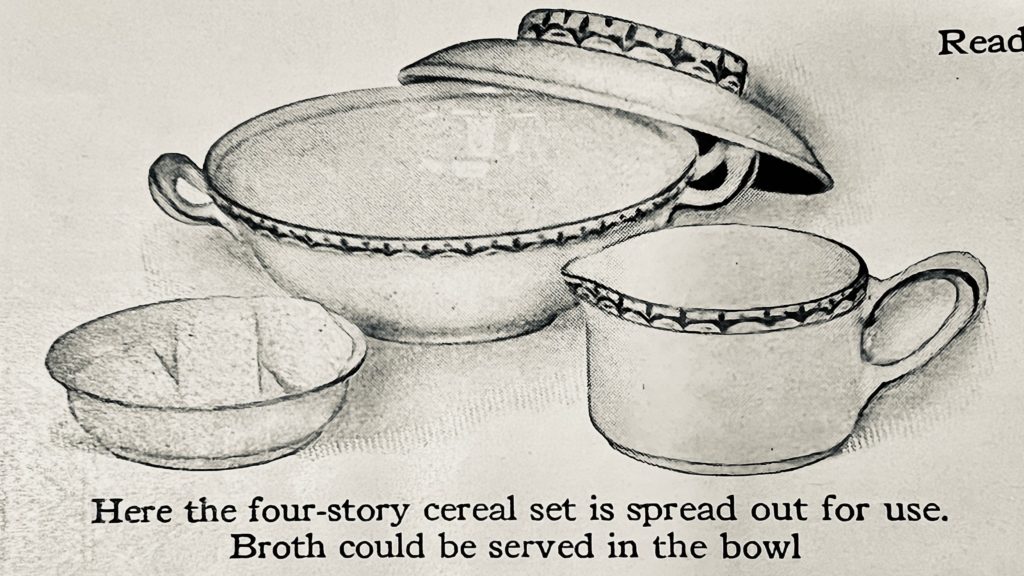

Now there is a difference between how tray sets were used in America as opposed to Britain. In Britain, the upper classes served themselves at breakfast. Trays were reserved for invalids and women recuperating from birth. Sometimes the lady of the house might have breakfast in bed, but it was considered unusual. Hotels, trains and luxury ships brought trays to first class passengers, which gave tray service the whiff of holiday or trade, and so were eschewed in Victorian and Edwardian homes.
Americans didn’t have this issue. A wealthy American was very likely to be waited on at breakfast and just might have their breakfast brought to them each morning on a tray. As I’ve said before, Americans tended to model their home life on hotel service or things they’d seen in plays, (or later on film). Comfort, convenience and luxury were often the watchwords of American service rather than tradition, consistency and class adhesion for the Brits.
Even upper middle-class Americans might expect some type of help at breakfast at the turn of the century. Two breakfast tray sets might sometimes be purchased for a couple on their wedding. If the couple had a maid of all works and a cook, they might expect to have their breakfast in bed. Once they would have children though, they would be admonished to have breakfast at the table where they could model good manners for their children.

When it came to breakfast sets for the table, all strata of society in America were likely to purchase a breakfast set for the table. They were offered at all price points and advertised in inexpensive through luxury ladies’ magazines. Often, a breakfast set was purchased separately from ones regular china and didn’t have to match, though the finest houses had entire matching breakfast service china sets. The regular joes would use their everyday china for all meals, supplementing their existing china with specialty pieces that blended in. If a family was slightly better off they would have an everyday set and another for company meals where they broke out the good stuff.
19th and early 20th century breakfast sets made for the table included a butter dish with draining tray, sugar, creamer and spoon holder. All sorts of other specialty items could be purchased as well, from condensed milk containers, to jam jars, honey jars, berry bowls, covered muffin dish and egg sets.
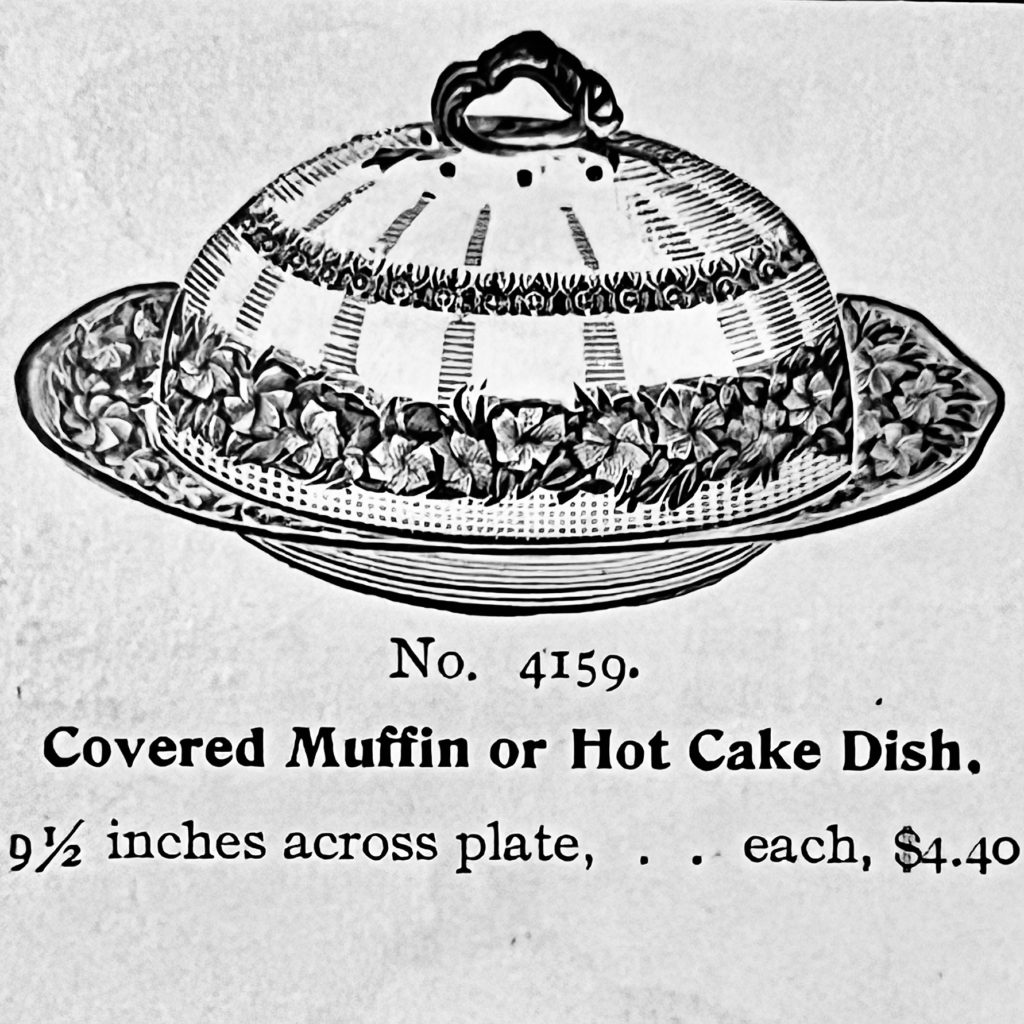
After the turn of the century, as soon as a house was electrified, new fangled electric gadgetry began to appear on tables. First, it was the coffee percolator, soon to be followed by the toaster, the waffle maker and the hot tray. Breakfast sets were made to correspond with these new items. Toastmaster was one of many lines of products that were developed in the twenties, they worked closely with American china makers such as Fiesta ware.

These breakfast sets could also be used for cocktail parities and generally had a more casual modern style.
Rarely do we now have sets of china for our breakfasts alone. Most people don’t seem to have more than one set of casual dishes and possibly a fancy set used for holidays. Unless one is actually a fan of table setting or china, it’s likely one has never even encountered a breakfast set. I get it.
That said, I have a real affection for breakfast sets. I guess I’m just very American and I’m influenced by all the 30s movies that I’ve watched. I also love breakfast and have been known to have breakfast for dinner. So, here are some other examples of breakfast sets to enjoy.
I hope you’re well, happy and partaking in delicious breakfastness. Sending you much love.
